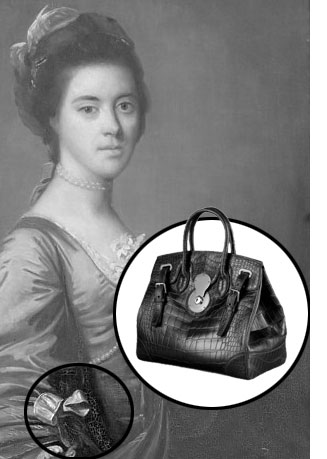Let’s talk asphaltum!

Art — if you care to approach it that way — is a subject rich in many robust varieties of geekery. History, chemistry, exotic materials. I really am going to start an art blog some day, but in the meantime I’ll just bore you guys.
Take asphaltum. AKA bitumen or pitch. I was thinking about it today (as you do). In intaglio, it’s used to protect metal plates from acid — the design is scraped away with a needle before etching.
Mixed with linseed oil, asphaltum makes a beautiful velvety brown paint. Like dark caramel. It neatly mimics the appearance of Old Master paintings that have mellowed with age.
Joshua Reynolds experimented with it. That’s his painting of Margaret Morris at left (please not to be making eye contact; Margaret obviously has the crazy eye).
The highlighted area shows the reason asphaltum is naughty. It’s not really a pigment at all (technically, a pigment is tiny solid particles of a colored substance), it’s just a sort of hydrocarbon goo. It never dries. It doesn’t even try. So paint laid on top of it becomes more brittle with age than the asphaltum underneath and inevitably cracks. Oil paintings often crack, of course, but asphaltum cracks have a dramatic, distinctive appearance called alligatoring.
Asphaltum is so lovely to look at and the effect usually takes so long to develop, some painters wouldn’t give it up even so. Long about the 18th Century, some bright colorist wondered if asphaltum that had aged for a very long time until it was apparently dry and brittle might not be safe to use. Paint made from very old asphaltum was sold as mummy or caput mortuum.
They stopped selling mummy in the 19th Century because a) it didn’t work — it alligatored just as badly as fresh asphaltum. And b) word got around it was actually made out of ground up Egyptian mummies embalmed in asphaltum! And it was, too.
April 16, 2009 — 6:44 pm
Comments: 24











